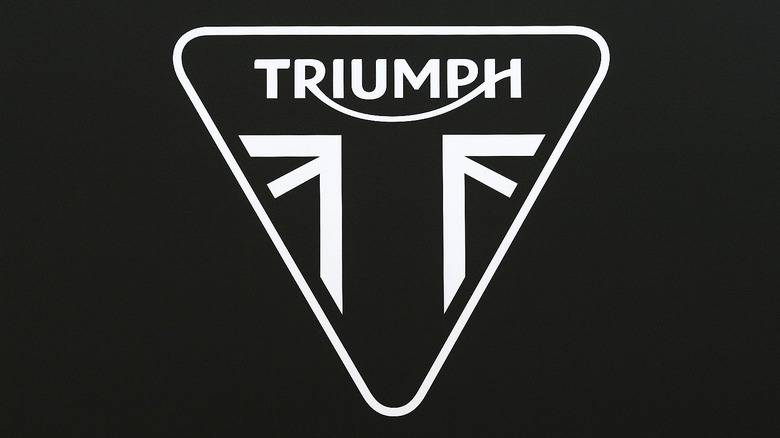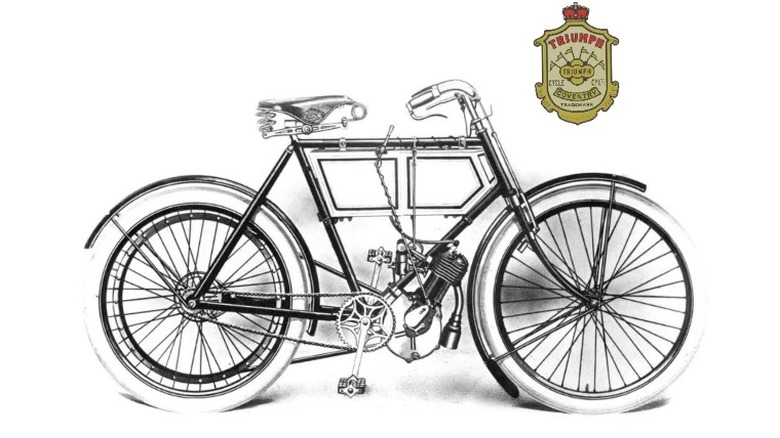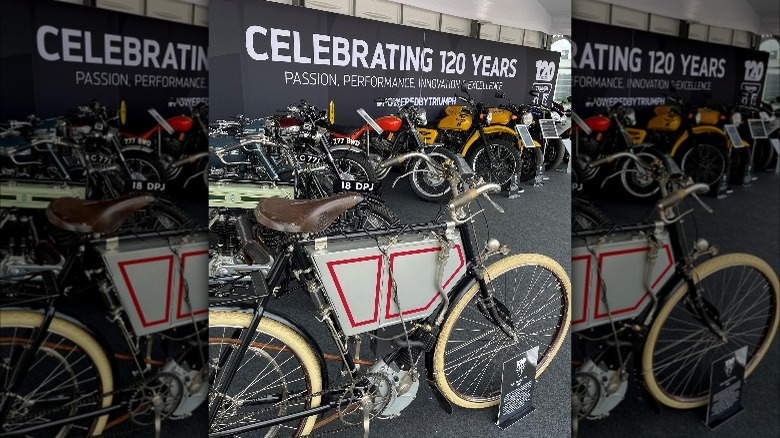Everything To Know About The Very First Triumph Motorcycle
Since its founding in Coventry, England, circa late 1800s, Triumph Motor Company has been one of the best-loved UK manufacturers of motorcycles and cars. Of course, Triumph no longer makes automobiles, having shuttered that branch in 1981. However, the motorcycle division of Siegfried Bettman's automotive empire is still very much riding high, with Triumph Motorcycles old and new ranking among the most desirable on the market.
This said, the company behind the legendary Bonneville wasn't actually founded as a maker of soon-to-be sought- after motorcycles. Bettman instead founded Triumph to import and eventually manufacture bicycles. The latter innovation came about in 1887 after German engineer Mauritz Schulte joined the company and convinced Bettman that Triumph should be making and selling bikes of its own. Less than a decade later and Triumph was eyeing a transition into the rapidly growing market for motorized bicycles.
At the dawn of the 20th century, the very first Triumph motorcycles hit the road, and the rest, as they say, is history. Here are a few things to know about the very first Triumph motorcycle.
Triumph's first motorcycle delayed
It's widely believed that Triumph began plotting its transition into the motorcycle market as far back as 1895 after Muaritz Schulte got a look at a motorized bike designed by Hildebrand and Wolfmuller. Reportedly, Schulte was so taken with the motorcycle that he convinced Siegfried Bettman to consider manufacturing them under license from Hildebrand and Wolfmuller.
As enticing as the prospect was, the Triumph brain trust opted to put the idea on ice, believing such a vehicle wouldn't fare well in the English markets. They were likely wise to believe so, as motorized vehicles were heavily restricted in Great Britain at the time due to the infamous Red Flag Act. Backed heavily by stagecoach and locomotive company leaders who feared personal motorized vehicles might replace them, the Red Flag Act restricted the speed of a "horseless vehicle" to 2 mph in a city and 4 mph in the country.
These laws also required at least three individuals per motorized vehicle, including one to walk ahead, carrying a red flag to alert the public of oncoming traffic. Believing such restrictions limited the commercial appeal of a motorcycle, Triumph kept out of the market until the Red Flag laws were repealed.
Triumph's No. 1, basically a bike with a motor
England lifted its Red Flag laws by the end of the 19th century, at which time Triumph ramped up development on its first motorized bicycle, eschewing the initial licensing prospect to build a bike based on one of Mauritz Schulte's own designs. Appropriately dubbed the "No. 1," Triumph's first motorcycle wasn't wholly manufactured in-house, as Schulte basically fit a Triumph bicycle frame with a belt-driven engine developed for motorized bicycles made by Belgian outfit Minerva.
Triumph drove its prototype for the No. 1 motorcycle off the line in 1901 and began pre-sales later that year. Slightly modified versions of the bike officially hit the market the following year. They did so with a larger 2.2 hp Minerva that theoretically allowed for a top speed up to 30 mph. Yet, with a price tag around £50 brand new, the first Triumph motorcycle, unfortunately, was a luxury that few outside of the upper class could afford.
Cost aside, Triumph's No. 1 was a hit with adventurous UK motorists, and it sold well enough for the company to open a new manufacturing plant in Germany to keep up with production. The No. 1 remained in production until 1905 — when Schulte, together with Charles Hathaway, introduced the Model 3hp, the first Triumph designed and built entirely in-house. The significantly upgraded bike essentially made the No. 1 obsolete. Even still, the No. 1's place in Triumph's storied history, and thus the history of motorcycles, will surely endure as long as people ride.


